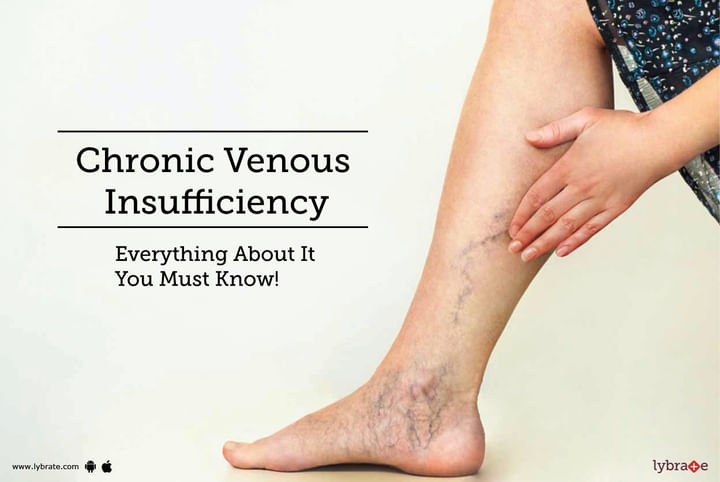Chronic Venous Insufficiency - Everything About It You Must Know!
Chronic Venous Insufficiency is an abnormal condition of the leg veins. It occurs when either the walls or the one-way valves of the veins cannot work effectively. This
makes it difficult for the veins to send the impure blood from the legs to the heart. This results in impure flowing backward and collecting at places in the veins. It can
cause swelling, pain, and changes in skin and over time may lead to ulcers in legs.
Causes of Chronic Venous Insufficiency
Veins return impure blood from all parts of the body to the heart. In the case of legs, the impure blood has to flow upwards to the heart. The natural coordination between contractions of feet and calf muscles with every step helps to push the blood upward. The veins have one-way valves to ensure that impure blood does not flow back up into the veins.
● If the valves in the veins somehow get damaged or weakened, the impure blood starts backing up. This results in Chronic Venous Insufficiency.
● Blood clots in the deep veins can also precipitate this disease. Blood clotting in the deep veins of the legs is a disease which is known as Deep Vein Thrombosis. Nearly 30% of people with Deep Vein Thrombosis develop this disease.
● Vascular malformations and Pelvic tumors may impair the natural coordination of muscles and lead to failure of leg valves in holding the weight of impure blood. This may lead to swelling of legs and Chronic Venous Insufficiency. Damaged or weakened valves may result from aging, extended standing or sitting, reduced mobility or a combination of all. If either the valves or the walls of veins become so weak that the veins cannot ensure normal blood flow, it leads to higher blood pressure in the veins for extended periods of time leading to Chronic Venous Insufficiency.
Who Is At Risk?
CVI occurs frequently in people aged over 50 years, and it affects women more than men.
Symptoms-
CVI is a gradual development. The earlier it is diagnosed, the better are the chances of recovery. Complexities of treatment increase with the disease progression. This is why early recognition of the symptoms can be a game changer. Waiting for the problem to go away would aggravate the problem. Early intervention would ensure a rapid recovery. This is why one needs to have a fair idea of the symptoms. The symptoms include:
● Swelling in ankles and lower legs, mostly after sitting or standing for extended periods.
● Tiredness or pain in the legs
● Varicose veins
● Changes in the appearance of the skin of legs
● Itching or flaking skin on the legs
● Ulcers in legs
Treatment-
Chronic Venous Insufficiency demands a combination of treatments to bring the situation under control. With the help of compression stockings, regular movement, and exercise, one can help the leg veins to push the blood up. If there are ulcers, the doctor may also recommend antibiotics to prevent infections. For blood clots, the doctor may also prescribe blood thinners. However, if the situation does not come under control despite these measures, the doctor may go for surgery that includes vein repair, vein transplant, vein bypass, vein ligation, etc.
Take Away-
There are many treatments available for Chronic Venous Insufficiency. However, it is
always advisable to consult a doctor before opting for any treatment. Testing


+1.svg)
